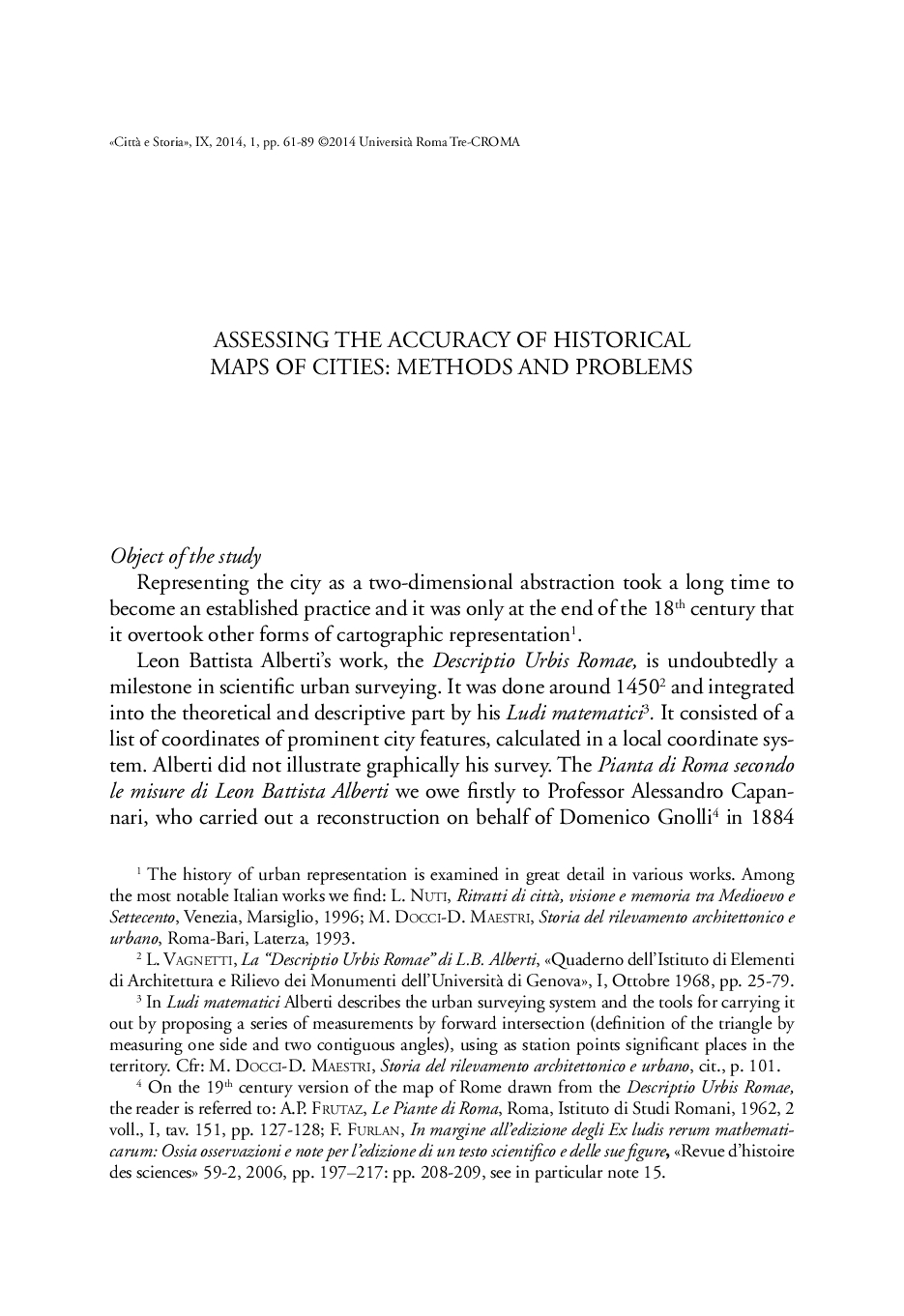Indice dei fascicoli
CITTÀ & STORIA » 2014/1 » Digital methods for urban history
ISSN 1828-6364
Valerio Baiocchi - Keti Lelo
Assessing the accuracy of historical maps of cities: methods and problems
pp.61-89, DOI 10.17426/18984
Articoli
Abstract: This essay deals with the themes of urban surveying and the metric accuracy of the ichnographic representations of cities by looking at a case study considered to be best practice at international level in the field of 18th century cartographic production: the Nuova Pianta di Roma, published in 1748 by G.B. Nolli. Despite the lack of concrete evidence to prove that there was a geodetic measuring procedure prior to the consolidated survey operations per sector in the city, a careful analysis of the preparatory drawing of the so-called Pianta Grande by Nolli enabled us to support a modus operandi that was basically similar to how a ground survey of the urban fabric would be carried out today. The accuracy of the cartographic survey was tested by georeferencing the Pianta Grande with a network of ground control points (GCPs), obtained thanks to a custom-made survey of GPS points and the subsequent assessment of the real accuracy of the historical cartography carried out using two different control points (CPs) networks: the first network consisted of points from present-day cartography (mainly building corners) univocally recognizable in the historical cartography and distributed uniformly over the city within the walls and the second consisted of points that were suitable for being used in the presumed operations of geodetic measurements. These points included obelisks, columns, towers and bell towers, easily visible from most of the city and easily sighted at ground level. As we expected, the level of accuracy of the historical cartography measured on the network of the presumed significant points of the city is higher than that measured on a network of randomly chosen points. This methodology allowed us to confirm the hypothesis that Nolli used a network of geodetic measurements that consisted of significant points in the city, on which the partial surveys of different sectors of the city were subsequently “georeferenced”.

Referenze
- download: n.d.
- Url: http://archivio.centroricercheroma.it/?contenuto=indice-dei-fascicoli&idarticolo=1085
- DOI: 10.17426/18984
- citazione: Valerio Baiocchi - Keti Lelo, Assessing the accuracy of historical maps of cities: methods and problems, "Città & Storia", IX/1, pp.61-89, DOI: 10.17426/18984

